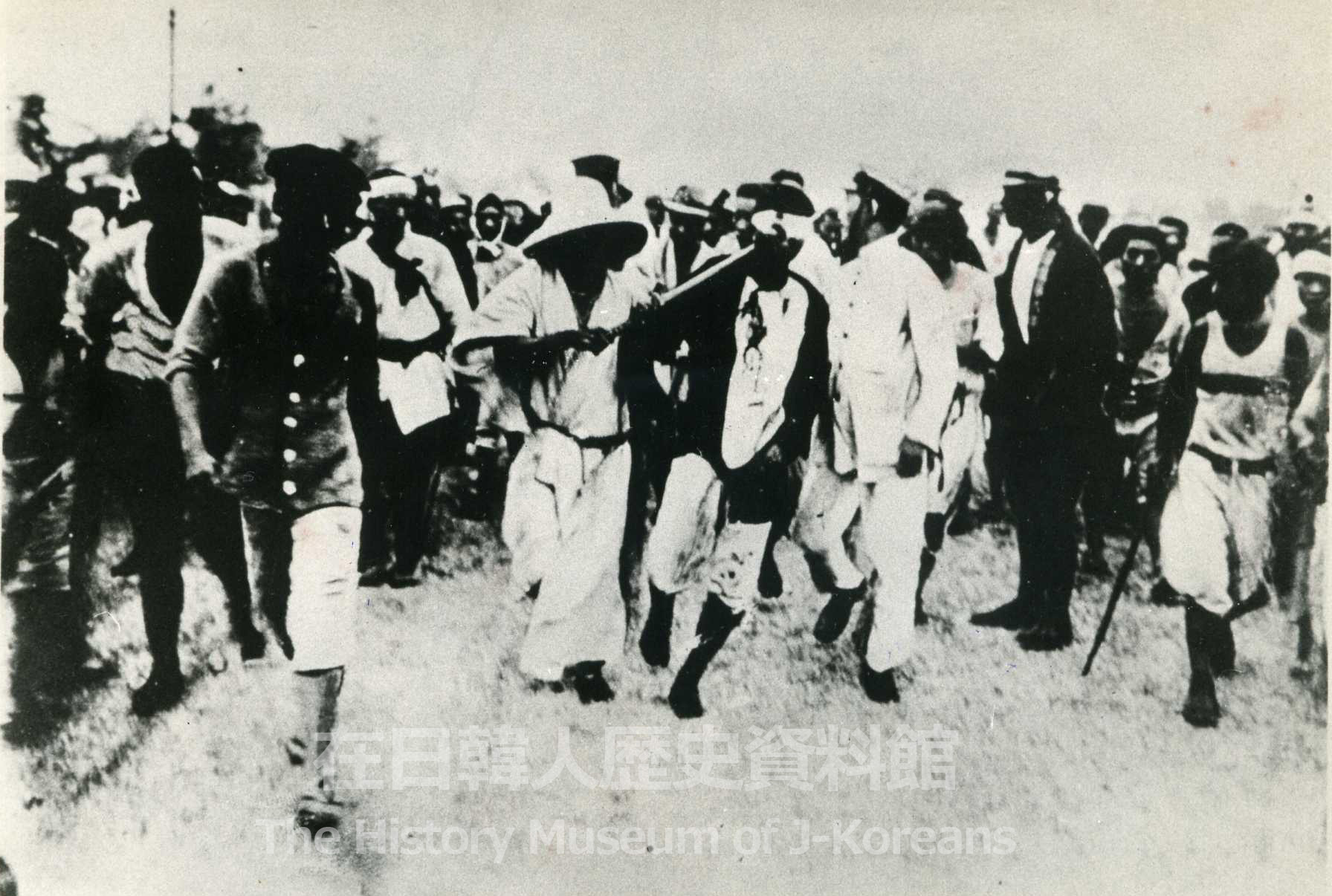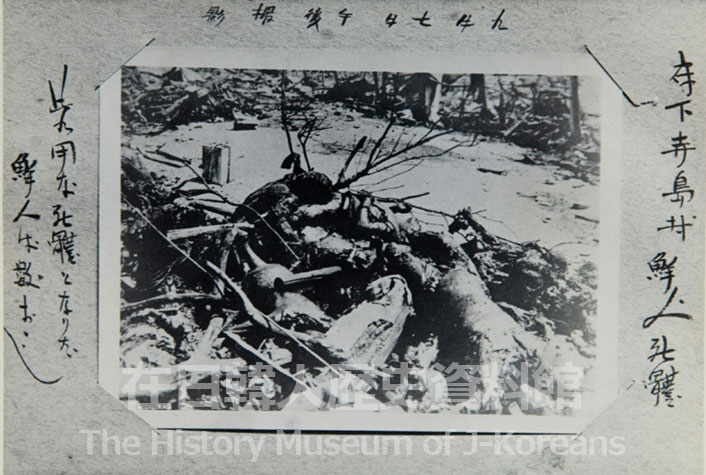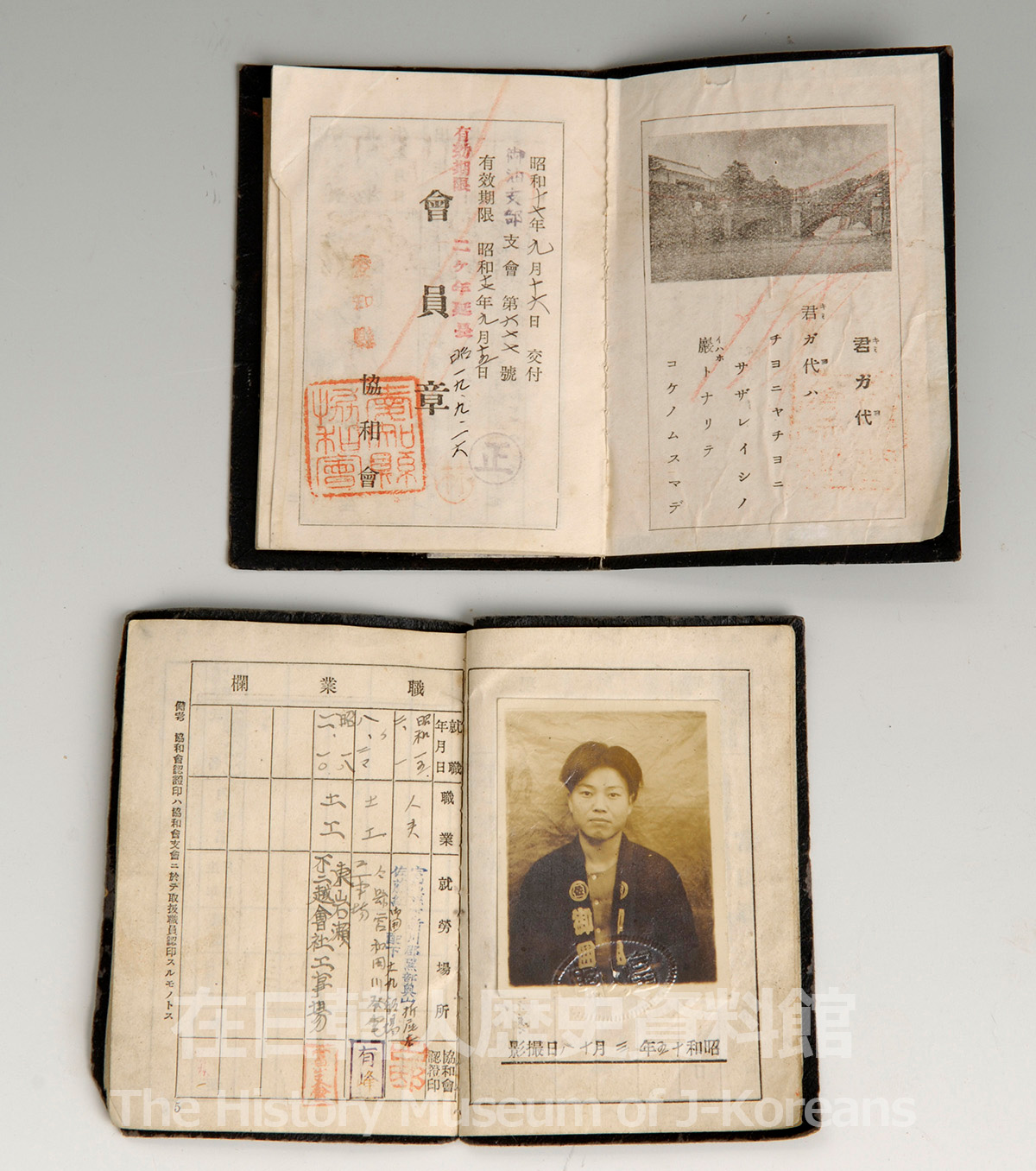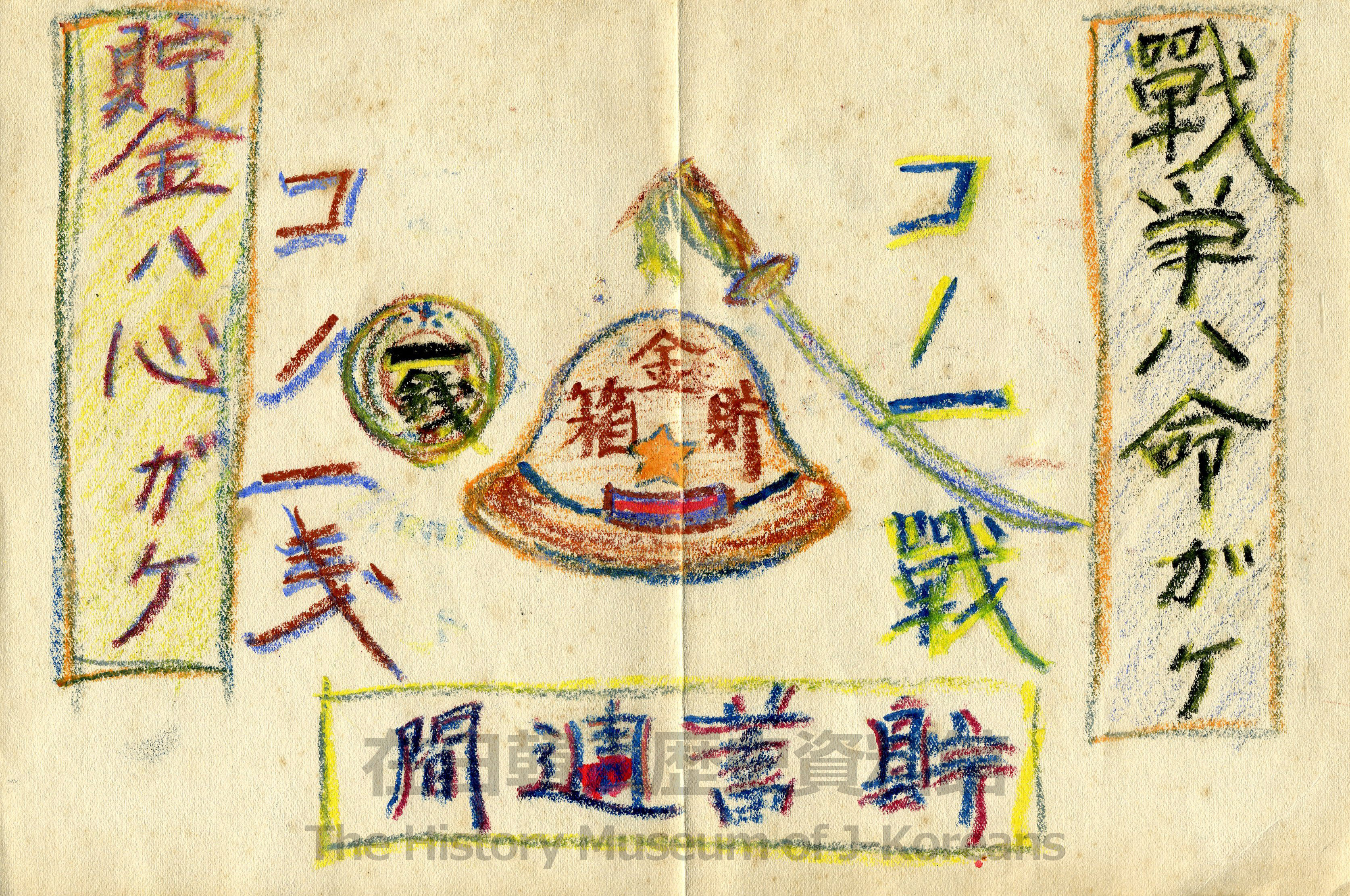Exhibition Room 1
The First Generation of Koreans in Imperial Japan
The Great Korean Empire (1897–1910) became a protectorate of Japan following the Japan–Korea Treaty of 1905, which laid the foundations for the subsequent Japan-Korean Annexation Treaty of 1910.
In 1905, a ferryboat service began operating between Busan and Shimonoseki. Routes were also opened between Jeju and Osaka (1923), Yeosu and Shimonoseki (1931), and Busan and Hakata (1943). 80,000 to 150,000 Koreans came to Japan every year from the late 1920s to the 1930s on these ferries.
The Busan–Shimonoseki Ferry was constantly full of people, and the scheduled ships could not keep up with the demand. Before people were allowed to make the voyage, there was a strict inspection by the Busan maritime police to check for adequate funds (travelers were required to have at least ten yen, on top of the travel fees), Japanese language ability, confirmation of employment, and more. Even so, the number of Koreans entering Japan in 1930 reached 400,000.

Guide to Northern Korean Shpping Routes (OSK)

(L) Issued on 2 March 1942 (39 yen 55 sen) from
Pyeong-anbuk-do, Ganggye (present-day Chagang-do)
(R) Issued on 2 January 1943
(23 yen 10 sen)from Hwanghae-do, Hwangju
The Great Kanto Earthquake Korean Massacre
September 1st is Disaster Prevention Day in Japan. However, for Zainichi Koreans, this is the memorial of a man-made disaster. When considering the 100-year history of Zainichi Koreans, one cannot forget the tragedies suffered in the aftermath of the Great Kanto Earthquake (September 1923), where people were massacred on the streets for the sole reason of being Korean.
Usually murder cases are sentenced according to when, where, how, and who murdered whom. However, even though it is said that over 6,000 of the 20,000 Koreans living in the Tokyo-Yokohama area were killed, even their names cannot be known. According to Japanese authorities, the incident was simply an unfortunate and unforeseen consequence of the bizarre rumor that “by taking advantage of the confusion from the earthquake, Koreans had set fires and poisoned wells.” However, it was the Japanese authorities that deliberately spread the false rumors, and it is clear that the vigilante groups acted under the auspices of the army and police forces that were mobilized by the state under this period of martial law. Photos and other records of the massacre are proof of this cruel fact.
The problem is that the Japanese government has not investigated this massacre or apologized for it.
The human rights violations and the stigmas created by the false rumors have yet to be expiated. The dignity and honor of the Korean victims have yet to be recovered. There is no statute of limitations in history. The truth must be uncovered.

Koreans being taken away by vigilantes and the police

Koreans massacred at Terashima (Sumida Ward of Tokyo)
Forced Mobilization
After the outbreak of the Second Sino-Japanese War in 1937, Japan established a total mobilization system based on the National General Mobilization Law (Kokka sōdōin hō, 1938) and the National Draft Ordinance (Kokumin chōyō rei, 1939). Many Korean youths were conscripted to work in core industries in mainland Japan, in what is now known as the forced mobilization of Koreans (Chōsenjin kyōsei renkō).
Forced labor began in the autumn of 1939 and was initially referred to as “company-directed recruitment.” After the outbreak of the Pacific War, this escalated to “government-directed recruitment.” During the last stage of the war, it morphed into outright labor conscription, but the Japanese government was involved in all three stages from the start. Through its Labor Mobilization Plan (1939-41) and National Mobilization Plan (1942-45), over 720,000 people were forcefully mobilized from Korea to mainland Japan, South Sakhalin, and the South Pacific. Approximately half of these people were sent into coal mines and the rest to iron ore mines, construction sites, factories, ports, and farms. The work conditions in the coal mines were grueling and dangerous, and meals were insufficient. For that reason, many tried to flee from their dormitories. Companies sought to prevent workers from fleeing by paying the bulk of the wages into bank accounts or transfers so that workers would not have access to cash. When Korean workers protested, they were punished severely, such as being sent to prison camp.

A photo of forced laborers riding a ferry in Busan

Underground shelter for the Matsushiro
imperial headquarters in Nagano
The Insanity of Education for Molding Loyal Imperial Subjects
Shortly before the Second Sino-Japanese War, General Jirō Minami was appointed as Governor-General of Korea. As Governor-General he facilitated the emperor’s visit to Korea, called for the implementation of Korean conscription, and held as his central policy the “clarification of the national polity.” This policy bound Korean people’s daily lives with imperial demands, such as to “worship the East (imperial palace) from afar,” regularly attend Shintō shrine services, stop wearing Korean ethnic clothes, use only the Japanese language, and adopt the Japanese naming system (J: sōshi-kaimei, K: changssi gaemyeong).
The “Oath of Subjects of the Imperial Nation” (November 1938, children’s version) went as follows:
1) We are subjects of imperial Japan.
2) We will work together to loyally serve the emperor.
3) We will train ourselves with discipline and become strong subjects.
Students all over Korea were made to copy the Oath. This Oath was also buried under the foundation of the “Oath Tower” of the Joseon Shrine in Seoul. Schools began every day with its recitation. The Korean language was banned from schools (April 1938) and those who did not use the “national language” of Japanese were punished. The school gate was said to be the gate that led to the Japanese military.
Sōshi kaimei (lit. “establishing family names and changing given names,” February 11, 1940) aimed to destroy the traditional Korean family system. On paper, the policy was propagated as an expression of “the great love of Yamato” bestowed upon Koreans suffering from discrimination. The family name Kim(金) might have been changed to Kaneda(金田) under this policy, and Jang(張) to Harimoto(張本)

Kyōwakai Membership Card

Painting drawn by Duk-sang Kang during the war (when
Kang was in seventh grade, during art class; 1944-1945).
The painting calls for saving money and risking one’s
life for war.